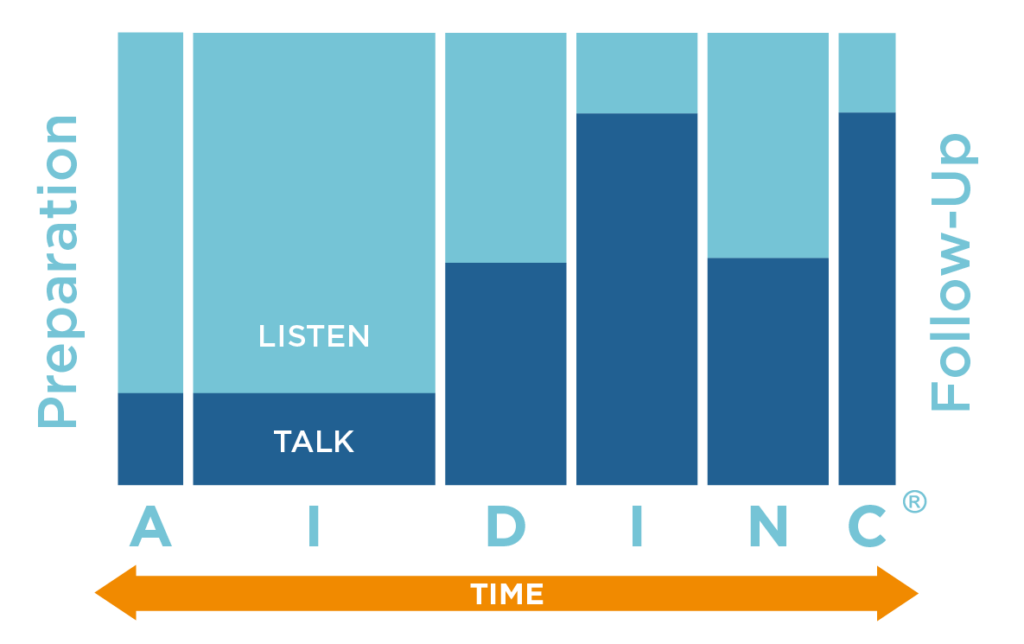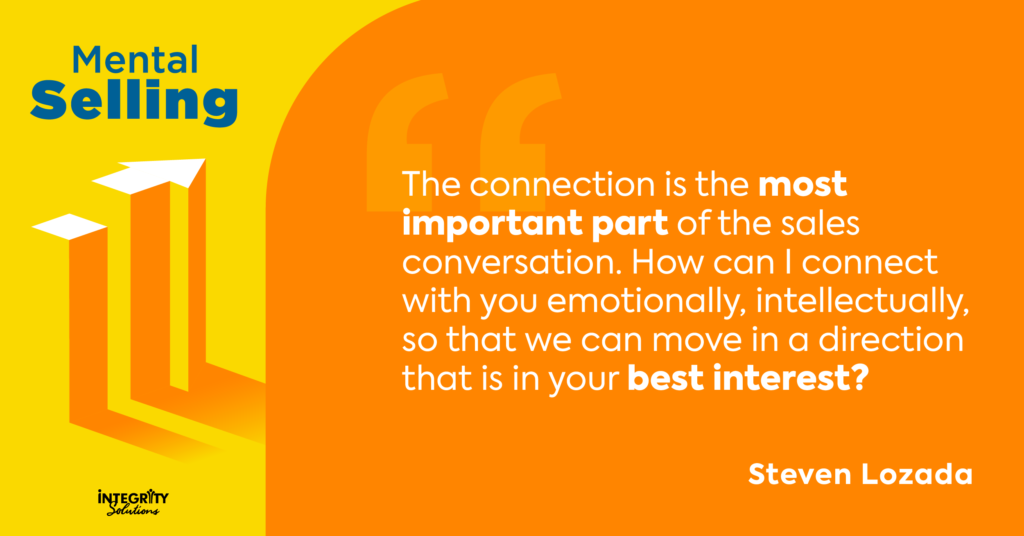Sales Negotiation Skills That Deliver Success

For many in sales, negotiation is one of the most challenging aspects of the job. More often than not, these salespeople approach negotiation as a win-or-lose endurance game, a contentious battle that pits two opposing sides against each other. “Winning” means convincing the customer to accept your point of view—even if the outcome isn’t necessarily in the customer’s best interest.
It’s no wonder then that salespeople can be wary of the whole sales negotiation process. In this kind of zero-sum game, intense conflict is often a given, and that’s stressful. It’s uncomfortable. And if you’re driven by a desire to help your customers and make sure their needs are being addressed, it can feel like you’re going against everything you believe in. You end up dreading the process and may even avoid facing it altogether.
But sales negotiation shouldn’t be an adversarial experience. It isn’t about wearing down the other side or dazzling them with your clever tactics and artful persuasion. Done well, negotiation in sales is a win-win process of working through the problems or concerns that keep people from buying—when they want to work them out. Negotiation involves both skills and attitudes. It demands a combination of both IQ and EQ. As Elisa Matthews said on an episode of our Mental Selling podcast, “Salespeople with high EQ recognize that when a customer brings up a concern or objection, they are not saying no to you, they are expressing something they may not fully understand. So instead of being quick to respond with more information, they’ll ask a question to understand their why.”
You’re seeking not to bury objections but to bring them out into the open- viewing them as interest signals- so they can be properly addressed and involve the customer in resolving concerns. In the process, you’re building greater trust. When viewed through this lens, it’s easy to see how sales negotiation fits into a customer-centered sales and buying journey.
Effective sales negotiation is a natural progression of a conversation and a relationship that’s already been forged when the salesperson has made a point to build trust, understand the customer’s needs and demonstrate a solution that the customer agrees will fill their needs. When that groundwork has been laid, negotiation becomes a partnership, not a combative situation. It’s another step in the process of building rapport and addressing customer concerns.
To get to the best decisions, you have to first surface different, previously unseen points of view, including any disagreements or misunderstandings. That’s what healthy conflict is all about. As businesses in general shift decision-making models from a top-down approach to more collaborative, inclusive decision-making that involves multiple stakeholders (including the end users of a product or solution), more disagreement and conflicting perspectives are inevitable—and more negotiation will be necessary throughout the process.
Understanding the Rationale Behind Sales Negotiations
Two common types of rationales in any sales negotiation are (1) constraint rationales and (2) disparagement rationales. Constraint rationales refer what’s holding someone back from accepting an offer, including price. Disparagement rationale, conversely, is based on scrutiny of what’s being offered (ex: doubts about its quality or impact).
Columbia Business School compared the effectiveness of these two types of rationales, finding that sellers are far more swayed by buyers’ constraint rationales than by their disparagement rationales. Why is this? First, sellers may view the criticism in a disparagement rationale as inaccurate and even insulting, and react by digging their heels in on price. Second, when buyers describe their financial constraints, sellers might simply take them at their word when they say they can’t afford the deal on the table.
The greatest form of persuasion is to understand how other people feel and then repeat back to them your understanding.
– Dr. Carl Rogers
Changing Mindsets Around Sales Negotiation
For most salespeople, the biggest obstacle to getting what they’re hoping for in sales negotiations is not the person or organization across from them but the salesperson themselves. There’s a human tendency to react in the moment without thinking, and the ability to suspend those knee-jerk reactions is critical for advancing our own interests and finding common, mutually beneficial ground with buyers.
Like any aspect of selling, coming in with a growth mindset– viewing any negotiation as an opportunity to learn, problem-solve and understand how to create greater value- helps build critical resilience and persistence skills essential to sales success. It includes preparing well, being open to constructive feedback and separating your emotions from solving the challenge at hand.
Until you recognize and understand what’s causing those knee-jerk reactions, though, it’s difficult to change. Typically, these behaviors are rooted in a person’s inner beliefs and mindset about what negotiation is, their expectations about what they’re going to be confronted with and their confidence in their ability to navigate the process. We know that when a salesperson struggles to deal with fear of rejection, fear of failure, fear of the unknown and even fear of success, that’s what will probably cause them to fail more than anything else.
Because of these mindset issues, sales negotiations can cause people to unintentionally react in ways that are completely opposite of their best interests. Whether it’s based on misunderstanding, fear of change or fear of taking risks, the salesperson pulls back. They’ve lost sight of what the negotiation phase of selling is really supposed to be about.
An effective sales negotiation process should result in a win-win scenario; if you haven’t uncovered and addressed all of the concerns, fears, objections and hesitations of all stakeholders, no one wins in the end. Especially in today’s complex selling situations, it’s not uncommon for new stakeholders to join the buying group mid-stream. An unanswered concern by one of them can derail the entire process.
Instead of fearing this step, successful salespeople welcome it. They have a mindset that views concerns as helpful feedback, not something to overcome. And they have the emotional intelligence to do the necessary activities and take in what’s being said, even if it’s not something they want to do or hear. Rather than getting defensive, they recognize that this is not only part of the process of understanding the full picture of a customer’s position; it also helps the stakeholders clarify their own thinking.
And negotiating is not just something that happens with new customers. Very often things like navigating a price increase with a valued, long-time customer can cause the greatest angst. It may have been years since you’ve raised prices. Approaching these discussions from the standpoint of the core of selling- a mutual exchange of value– and focusing on that message of value, ROI and care that the customer has experienced (and looking forward together) keeps the focus on the relationship. Salespeople shouldn’t fear anger or dissatisfaction from the customer. These should not be a “we vs. them” discussions.
Listening to Negotiate
The most successful salespeople listen far more than they talk, and like all other aspects of sales, negotiation hinges on how well you listen to what your customers are communicating, both verbally and non-verbally. Start by understanding that people are typically far more motivated to avoid losses (risk aversion) than they are to achieve gains.
This doesn’t mean listening is a passive activity. As a salesperson committed to helping the customer make a buying decision that is in their best interests, you need to ask the right questions so you can both understand what concerns or objections they have and answer their questions or challenges. Negotiation should be about uncovering and addressing questions or concerns that remain in the way. It’s a part of your overall sales framework.
Successful salespeople use active listening and effective questioning to reinforce the rapport and trust they’ve already established up to this point. This includes:
- Beginning by asking the customer, openly and with genuine empathy, what they want, specifically, out of the negotiation process.
- Asking good, open-ended questions, such as: What other questions do you have? What other information do you need? What concerns, if any, do you have? What else do we need to discuss?
- Showing respect and a desire to be a valued partner.
- Listening not to respond but to truly understand.
- Focusing on solutions rather than problems and asking their opinions on possible solutions instead of telling them what the best solution is.
Sincerely asking about people’s feelings, concerns or objections and having a genuine desire to understand them strengthens rapport, removes barriers to communication and helps you sidestep battles of ego or emotion. Through this process, salespeople often find that the answers to those questions are not about money or cost or more of this or that. The issues are often rooted in less tangible, more emotional factors. Good negotiation questions can also help the salesperson uncover more about what the customer hopes is possible—or what they assume might not be possible. A simple phrase like, “so what I believe I hear you saying is…” can go a long, long way.
Sometimes you’ll discover that the source of what’s being negotiated isn’t about you at all. It could be about internal challenges where the customer is disagreeing with others in their organization about the decision or certain issues surrounding it. A good salesperson will not only be able to bring that friction point to the surface but will also be able to help facilitate agreement around it.
Go Slow to Go Fast

The timing and cadence of when negotiations happen in the sales process are also important. Too often, salespeople don’t take enough time in the all-important Approach and Interview phases of the AIDINC sales process. So they end up jumping into the Demonstration phase based more on assumptions than understanding and agreement. So, it takes more time on the back end because there are remaining objections that still need to be addressed. By doing a better job in the Approach and Interview stages, the Demonstration can be laser-focused on the customer’s needs. This leads to fewer objections when Negotiations do arise and closing is easier. All of this saves time and the customer feels better about the entire process.
Remember, sales negotiation is about working through common concerns, questions and objections. It is not meant to be adversarial. Increasing the customer’s involvement in the conversation throughout and aligning the solution to the needs of that customer increases acceptance of the solution because it addresses customer problems and needs much earlier in the process. Less weight is placed on negotiation and closing techniques and there are fewer objections to overcome in latter stages of the process. The salesperson’s “view of selling” also improves… as does their success rate and the strength of that new customer relationship.
Navigating Complex Sales Negotiation Discussions
Negotiations are the bedrock of successful sales, requiring a blend of inquiry and attentive listening. In the dynamic realm of modern sales, Integrity Solutions’ ACR framework—Ask, Clarify, and Respond—emerges as an indispensable ally for navigating complex discussions and fostering mutually beneficial agreements.
Listen with Precision
At the heart of effective negotiations lies the skill of active listening. It is more than just hearing and entails comprehending your customer’s underlying concerns and motivations. Watch out for subtle cues, hesitations, or uncertainties that could hinder progress. Failing to heed these signals may lead to what’s known as “happy ears,” where sales professionals overlook critical information due to over-optimism.
Uncover Insights with ACR
ACR acts as an instrument for delving into the challenges confronting your customer. By posing insightful questions, clarifying uncertainties, and responding thoughtfully, you unearth invaluable insights that shape your negotiation strategy. Too often, vital details slip by unnoticed when we fail to truly engage in active listening. ACR ensures a comprehensive understanding, guarding against potential pitfalls in the negotiation process.
Foster Trust through Empathy and Transparency
Negotiations thrive on trust, which is cultivated through empathy and transparency. When your counterpart feels genuinely heard and understood, they are more likely to engage positively with your proposals. By empathizing with their concerns and openly communicating your intentions, you establish a collaborative environment where both parties feel valued and respected.
Construct the Proposal Together
Collaborative proposal building is a powerful strategy for fostering alignment and cooperation during negotiations. Involve your customer counterpart in the development process to demonstrate a shared commitment to finding mutually beneficial solutions. This inclusive approach not only strengthens the proposal but also enhances buy-in and ownership from both sides.
Drive Successful Outcomes
Ultimately, negotiations aim to achieve successful outcomes that satisfy all stakeholders. By mastering the art of active listening and utilizing ACR, sales professionals can effectively address concerns, mitigate risks, and capitalize on opportunities. This lays the groundwork for enduring, meaningful client relationships.
A Successful Sales Negotiation is a Win-Win
Approach sales negotiations not with the mindset of dividing up a pie. Negotiations are rarely a zero-sum game. It’s about expanding that pie for all involved, which means finding common goals and coming in optimistically focusing on value creation and expanding the pie for all involved.
Remember, in sales conversations objections are a gift. They indicate customer is close to a decision… but they’re stuck and need more information that they feel is relevant.

Negotiation is an exercise in building bridges, and a successful sales negotiation mindset is rooted in a shared goal of helping the customer make the best, most informed decisions. Great salespeople don’t let themselves get hung up or feel defensive when faced with initial objections or push-back. They know that negotiations are like icebergs: The larger truth is probably hidden beneath the surface. And when approaching an iceberg, it’s better to slow in order to go fast.
Also remember that, in sales negotiations, making the first offer is often a smart move. The first offer creates a baseline or starting point for additional discussions and can greatly influence the final outcome.
Salespeople who handle negotiation with a positive, creative, win-win attitude will help their customers come to decisions that truly address their needs and that they are more likely to embrace and champion as a result. This, in turn, builds greater rapport and trust and strengthens long-term relationships and loyalty. Rather than avoiding or dreading negotiation as a combative, uncomfortable process, salespeople should welcome and embrace it.
Learn more about our approach to connecting with customers, negotiations, value creation and building confident, committed salespeople who are eager to learn and master their profession.

Vice President, Client Development
Related Blog Posts



